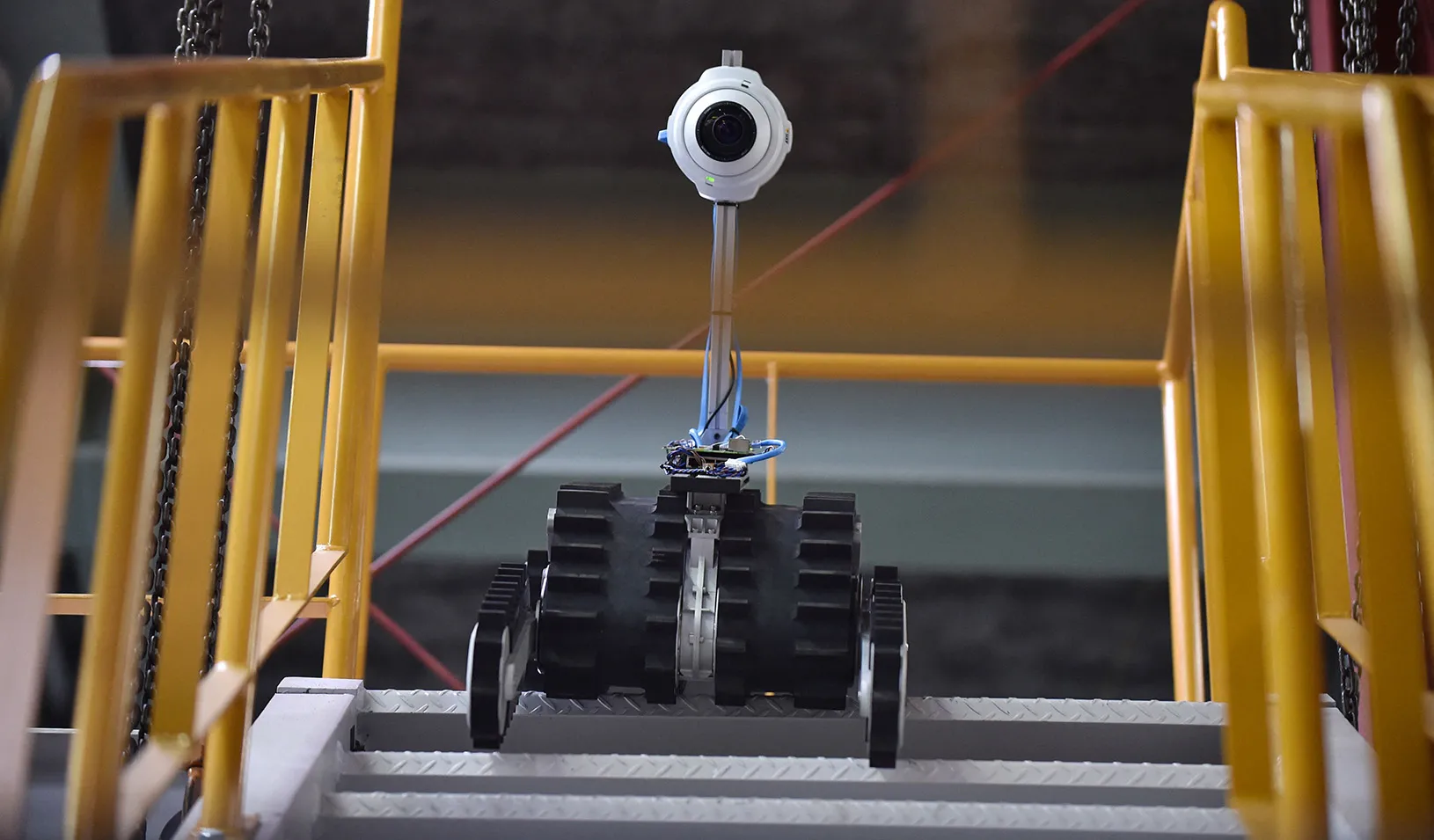Why We See Rescue Robots as Helpers, Not Heroes
How to design a robot that not only responds to disasters but inspires humans to help each other?
February 23, 2023

The Sakura No. 1 can operate in hazardous environments such as nuclear plants. | KAZUHIRO NOGI/AFP via Getty Image
From WALL‧E to R2D2 to the Iron Giant, pop culture is full of courageous, selfless robots that assist humans and tug on our heartstrings. But can real-life robots that respond to disasters and head into dangerous situations prompt us to be better people?
Research has shown that humans feel inspired to be more supportive of each other when they see others doing the same. As more robots are deployed to do dangerous jobs such as searching for hurricane survivors and cleaning up after nuclear leaks, Szu-chi Huang wondered if they also could evoke a prosocial response. “If robots are helping, does that make us more prosocial or less prosocial?” asks Huang, an associate professor of marketing at Stanford Graduate School of Business who studies motivation, including what makes people donate to nonprofits or volunteer to help others.
In a new article, Huang and Fangyuan Chen of the University of Macau examined how helpful robots can affect human prosociality. They found that helpful robots don’t inspire people — and can even demotivate them to help others. As Huang explains, “I’m not as inspired as when I see a firefighter run into a fire. When I see a robot running into fire, it’s less encouraging.”
Huang and Chen hypothesized that the downside of sending in robots to respond to disasters would be a net loss of prosocial behavior. To test this idea, they conducted a series of experiments.
First, they measured how likely participants would be to take part in a charity clothing drive after they were shown footage of either people or robots cleaning up a mudslide. Participants who watched the robots were less likely to donate. “One interesting thing about this study is that the disaster the robots are solving has nothing to do with the charity,” Huang says. “We don’t feel as encouraged by the disaster response robots. And when we are not encouraged and inspired, we are not going to help other people — even if it has nothing to do with the actual disaster.”
The next study explored why people feel this difference. Participants were asked to read narratives adapted from news reports about people and robots disinfecting hospitals during the COVID pandemic. Some of the stories highlighted the humans; others, the robots. The participants were then asked about their willingness to donate to or volunteer for three charitable campaigns. Again, those who focused on robots were significantly less willing to make a contribution.
Unemotional Rescue
Another study delved deeper into why rescue robots had a “backfire effect” on prosociality. Here, participants thought that robots seemed less autonomous and courageous and took fewer risks than people. Participants also perceived a lower need for human contribution (financial or otherwise) after reading about robot help.
Based on these results, Huang advises government agencies and engineers who seek to design more inspirational machines to consider “humanizing” robots — for instance, by creating an illusion of autonomy. She notes that people who willingly put themselves in harm’s way are seen as brave “because they have many other options and yet they choose to sacrifice themselves.” Robots following commands don’t elicit this reaction. “If you are controlled by somebody else, and you are just sent there, it’s not as inspiring because you had no choice.” Is it possible to design robots that make (or seem to make) autonomous calculations and then choose to enter risky situations?
Another reason robots don’t inspire us is the very reason we send them into risky situations. “There’s a vulnerability around human beings,” Huang says. “When they go into danger, they can actually get killed. That vulnerability is what makes us respect them and feel inspired by their courage.” When robots are perceived as more human and vulnerable to risk, they seem more courageous and inspirational.
Study participants also found human-robot hybrid teams inspiring — so long as the humans and robots were presented as equal partners that made joint, autonomous decisions together. This isn’t the first time Huang has examined the implications of human-robot hybrids. One of her prior studies looked at to what extent people are inspired to eat more healthfully if they think of their bodies as machines and food as fuel. (The answer: It depends who you are.)
Huang sees the business implications of this prosociality loss as an imminent concern, even if the notion of “how to build a braver, more autonomous, and more vulnerable-seeming robot” can seem a bit fanciful.
“It’s thinking about how we reframe technology,” she says. Leaders should take note of the study’s implications, as people and technology will need to work together more closely in the years ahead. “Businesses already have manufacturing production teams that are half-machine, half-human; this trend is rapidly growing in other stages of the business cycle, such as sales, as well as other aspects of our economy and society,” she says. “And, personally, I think prosociality is something we should all care about when it comes to human evolution.”
For media inquiries, visit the Newsroom.
Explore More

How to Survive the A.I. Revolution

Thinking Inside the Box: Why Virtual Meetings Generate Fewer Ideas



